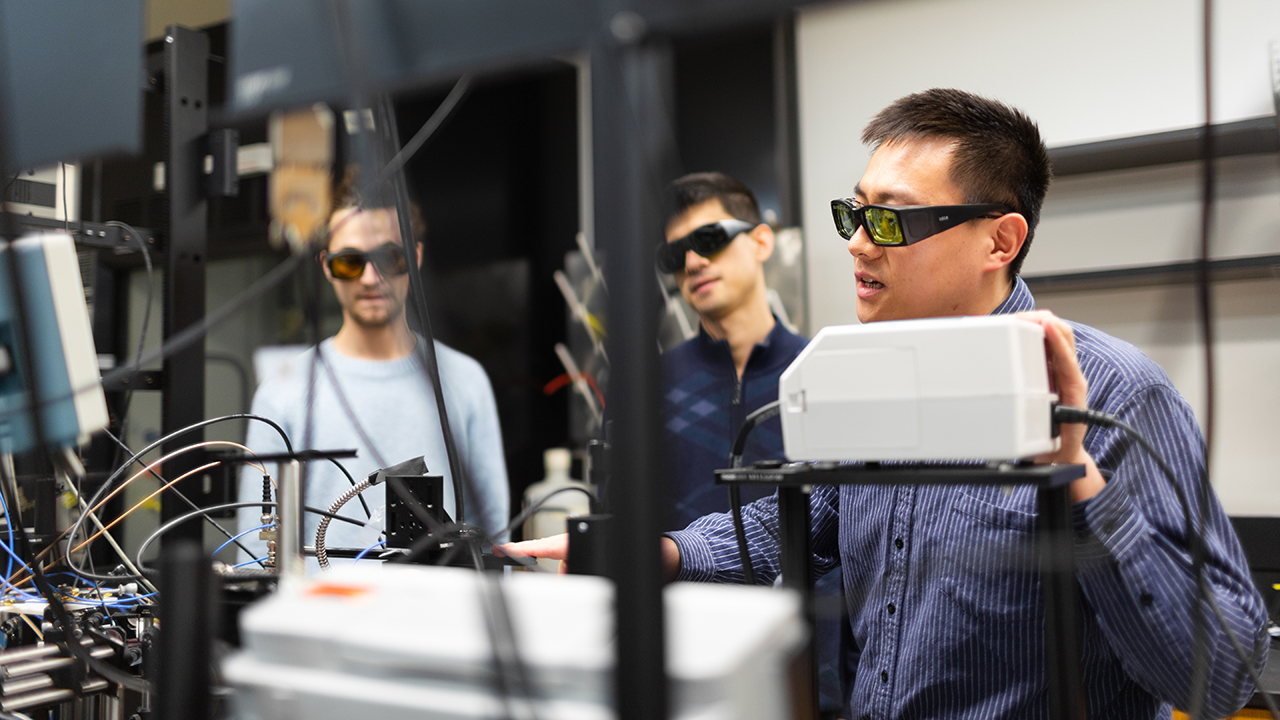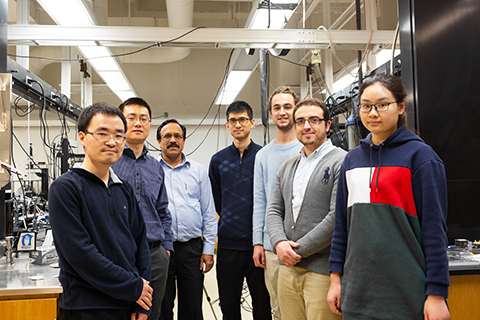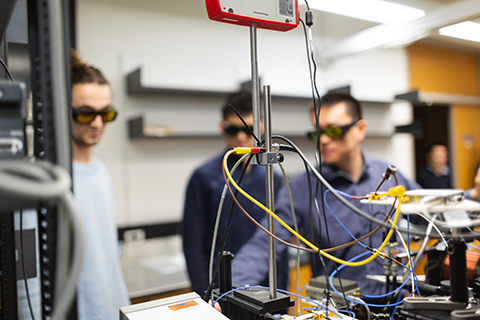- YouTube
- TikTok
OU research team’s work earns recognition in leading scientific journal
Discovery of ‘key’ to large quantum effect in magnetic materials could pave the way for more energy-efficient electronic devices

Dr. Wei Zhang and a team of researchers from the Department of Physics at Oakland University (OU), along with collaborators at Argonne National Laboratory (Lemont, IL) and Fudan University (Shanghai), have discovered a new “control knob” for tuning material’s properties that paves the way for more energy-efficient electronic devices like hard disk drives.
Their work — which was supported by the U.S. National Science Foundation, the Michigan Space Grant Consortium, and the U.S. Department of Energy’s Visiting Faculty Program — was published in a recent issue of Physical Review Letters, which is considered one of the leading scientific journals in the field of physics.
“It’s always exciting when you make a discovery in your field, and it’s being represented in a high-profile publication like PRL,” said Zhang, an assistant professor of physics at Oakland University and a corresponding author of the work.
 |
| The OU research team: Peng Zhou, Wei Zhang, Rao Bidthanapally, Yi Li, Sawyer Hall, Mouhamad Hammami and Ying Liu. |
The research team’s discovery relates to “magnetic damping,” an important parameter of magnetic materials dictating the rate of energy losses in their dynamic behavior. “Damping” occurs in analogous to an electric charge encountering resistance while moving through a conductive medium, which results in heat buildup inside the device.
“Right now, the further miniaturization of electronic devices is basically limited by the fact that you can make the parts smaller but you can’t really reduce current,” said Dr. Andrei Slavin, distinguished professor and chair of the Department of Physics at OU and a senior theorist of OU Institute for Spintronic and Microwave Technology. “As a result, you can’t dissipate power and everything overheats. You need to find ways to do the same computing signal processing while spending less power.”
According to Zhang, the team’s research focused on smaller electronic devices, like hard disk drives, which utilize magnetic materials that have been widely used in information storage and data transfer technologies.
“It is absolutely amazing to witness the rapid technology transformation of how magnetic materials have been used in the data storage industry,” Zhang said. “Every time I teach my modern physics class, the applications of magnetic materials and how they enabled an explosion in data storage technology is always one of my favorite topics.”
Hard disk drives contain a number of platters (disks) coated in a magnetic material that spins around 7200 rpm. Data is encoded onto the hard drive in binary code, using zeroes and ones.
“What we are doing is switching what we call the binary state, with one being up and down being zero,” Zhang said. “In order to switch them, from up to down or down to up, the energy you spend to switch them is highly dependent on magnetic damping. In our discovery, we figured a material can have not just one damping value, and if you change the orientations you will get different damping and therefore you would get a different energy cost when you switch the material’s properties.”
 |
| Researchers have discovered a new “control knob” for tuning material’s properties that paves the way for more energy-efficient electronic devices. |
The effect of magnetic damping, Zhang said, is similar to the “friction” that happens when you apply the brakes to a car in motion.
With this newly discovered effect, the friction force now “depends on which direction you go; and this time in a quantum-mechanical context,” Zhang added.
The discovery of such a direction-dependent quantum effect relies on a unique measurement called spin-torque ferromagnetic resonance — a technique that is well suited for investigating small-scale magnetic devices.
“Since we are going to look at small-scale effect, it is desirable to use a microscopic, local probe,” said Dr. Yi Li, the postdoc researcher working with Professor Zhang and also the first author of the published work.
“In addition, we have been practicing this technique for quite some time,” Zhang said. “Our latest development includes a newly added component that enables a dynamic tracking of the spin precessional phase, like a stroboscope, but this time using a focused laser light.”
To elucidate the underlying physics, the team found hints in the material’s local crystal structures: depending on whether the sample is “baked” or not, there can exist a slight difference in the separation distance between adjacent atoms. This ultimately leads to the damping effect being large in certain directions and smaller in others.
“The published work provides new fundamental understanding of magnetic damping, and is a crucial work that can potentially enable energy-efficient electronic devices made out of high-quality metals and alloys,” Slavin said. “We are very glad to see that Dr. Zhang made this interesting and significant discovery.”


 March 27, 2019
March 27, 2019